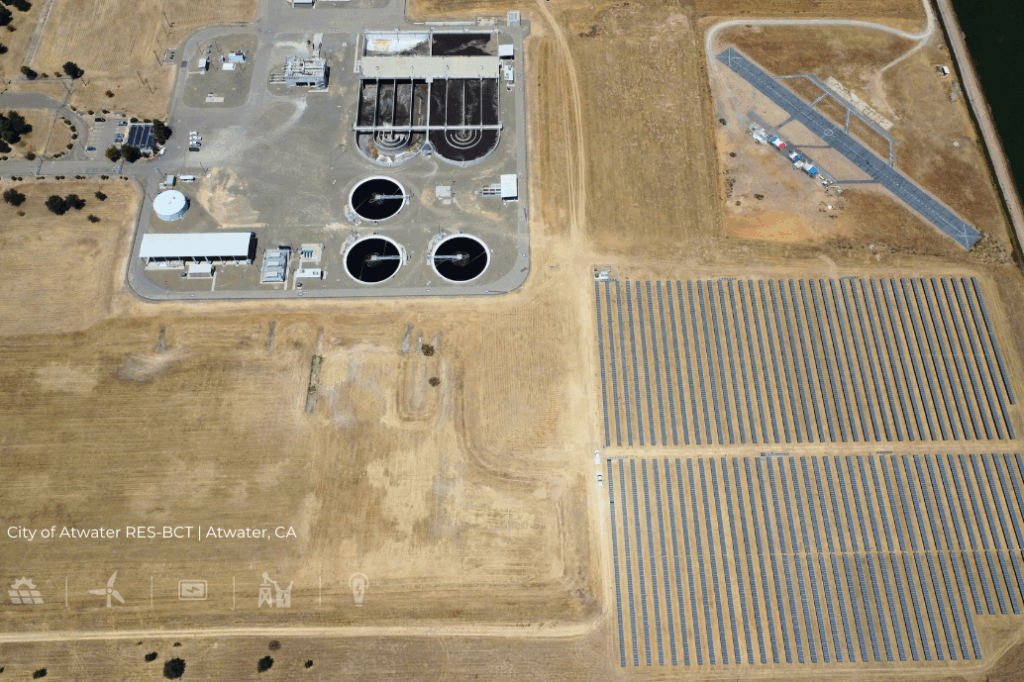Constructing Data Centers that Power Artificial Intelligence (AI) Learn More
What It Really Takes to Build a Utility-Scale Solar Plant

Bringing a utility-scale solar plant to life requires far more than photovoltaic panels and available land. These large-scale projects demand rigorous civil engineering, advanced electrical integration, and disciplined project execution. From sitework to final commissioning, each stage requires careful coordination, technical expertise, and proven field experience.
Solar plants of this scale can provide electricity to tens of thousands of homes and businesses—but only if built to exact standards. That means coordinating hundreds of workers, sequencing equipment across vast footprints, and adapting to changing site conditions while meeting firm deadlines.
From Groundwork to Grid Connection
Construction begins long before the first module is installed. The site must be cleared, graded, and made accessible—sometimes in remote locations with minimal infrastructure. Pile driving follows, with each post installed to strict tolerances to ensure the structural integrity of the racking system. Electrical trenching and conduit installation are coordinated in parallel, laying the foundation for DC collection systems, inverters, and interconnection.
This phase was particularly intensive at projects like Eland Phase 2 in Kern County, CA, where more than 263,000 solar panels were installed. Crews worked across challenging desert terrain while sustaining productivity and quality in extreme heat and dust conditions. The scale required disciplined field leadership and careful material staging to keep operations moving without bottlenecks.
Once the groundwork is complete, racking and module installation begin—often with multiple crews working in parallel. The scope is significant: hundreds of thousands of modules must be mounted, tightened, and wired with precision. Speed matters, but so does durability. Each connection, from module clips to string wiring, must withstand decades of temperature cycles and wind loads.
Projects like Aquamarine in Stratford, CA demonstrate how modern solar builds integrate far more than panels. In addition to 250 MW of PV, the project included a 230kV substation, energy storage infrastructure, and SCADA systems for real-time monitoring. Each component had to be delivered in sequence, from transformer pad pours to fiber-optic communication loops.
Adapting to Field Realities
No matter how thorough the planning, utility-scale projects face real-world variables that test every aspect of construction management. Weather delays, evolving permitting conditions, equipment availability, and labor scheduling all influence execution. Remote sites can compound these issues, limiting deliveries and crew housing. Maintaining momentum requires seasoned field supervision, the ability to troubleshoot in real time, and the application of value engineering to adapt designs and methods for cost, efficiency, and constructability without compromising quality or safety.
For example, during the award-winning City of Atwater RES-BCT project, field teams navigated interconnection coordination and permitting changes while maintaining schedule commitments under California’s Renewable Energy Self-Generation Bill Credit Transfer program. Though smaller in scale at 1.7 MW, the project reflects the same complexity and pressure as utility-scale builds—it just plays out in tighter timelines and regulatory windows.

Why Build to Last
When properly built, utility-scale solar installations become long-term energy assets. They offer 25+ years of stable, low-emission power, hedge energy costs for buyers, and support broader grid decarbonization goals. The plants being constructed today will help determine how resilient, affordable, and sustainable our energy systems are decades from now.
“We approach every solar job with a builder’s mindset and a utility’s expectations. Quality, safety, and performance are non-negotiable.” – David Zetterlund, General Manager – Solar.
That mindset is essential. Utility-scale solar isn’t just about installing panels; it’s about delivering an integrated system built for durability, performance, and accountability at every level.